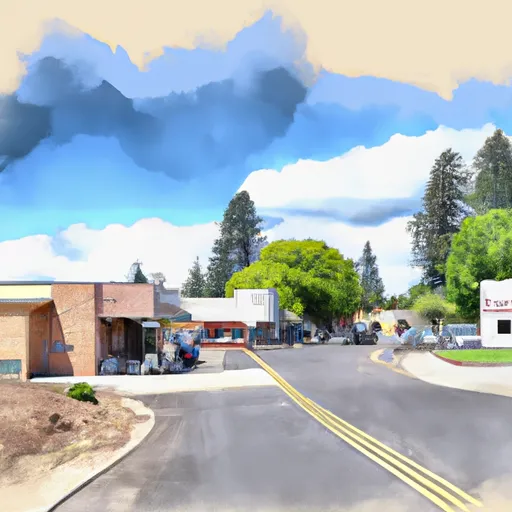°F
°F
mph
Windspeed
%
Humidity











Merlin, Oregon, located in Josephine County, is a small community situated along the Rogue River. The climate in Merlin is characterized by mild winters and warm summers. Average temperatures range from the mid-30s to mid-50s Fahrenheit in winter and mid-80s to low 90s in summer. The area receives around 30 inches of rainfall annually.
Hydrologically, Merlin is enriched by the Rogue River, offering picturesque views and recreational opportunities. The river supports a diverse range of aquatic life, attracting anglers and water sports enthusiasts. Kayaking, rafting, and swimming are popular activities in the area.
Outdoor recreation opportunities abound in Merlin. The surrounding natural landscapes provide excellent opportunities for hiking, camping, and wildlife viewing. Nearby attractions include the Rogue River-Siskiyou National Forest, which offers numerous trails for hiking and biking, as well as camping sites. The area also provides ample fishing spots, including the famous Rogue River, known for its salmon and steelhead fishing.
Merlin, Oregon, with its favorable climate, scenic hydrology, and abundant recreation opportunities, is a destination that appeals to nature lovers and outdoor enthusiasts alike.
Weather Forecast
Merlin receives approximately 1037mm of rain per year, with humidity levels near 80% and air temperatures averaging around 12°C. Merlin has a plant hardyness factor of 8, meaning plants and agriculture in this region tend to thrive here all year round.
Regional Streamflow Levels
2,350
Cubic Feet Per Second
909
Cubic Feet Per Second
2,510
Cubic Feet Per Second
10,200
Cubic Feet Per Second
Nearby Camping
| Camping Area | Reservations | Toilets | Showers |
|---|---|---|---|
| Secret Creek | |||
| Griffin County Park | |||
| Almeda County Park | |||
| Schroeder County Park | |||
| Whitehorse County Park | |||
| Indian Mary Park |



